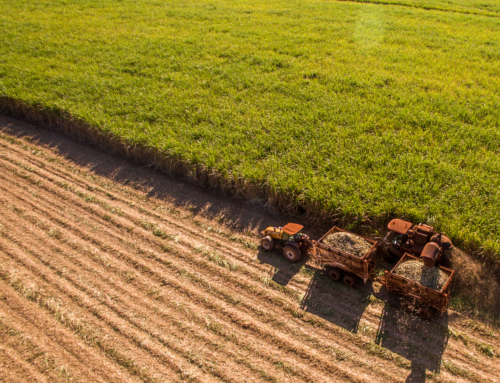Biomass energy has been used around the globe since the caveman days as a natural way to provide heat or power, but did you know that it is still commonly used today? What is biomass energy, anyway? You probably already use biomass energy in some form and don’t even know it.
What Is Biomass Energy?
Biomass is a term used for organic material we get from plants and animals, which can then be used to create a renewable source of energy. The first step in using biomass energy actually happens on its own, when plants absorb and store the energy they get from the sun during photosynthesis. From this point, there are five ways we can access this energy. We can get it directly from the plants or use the waste left behind after the plants have been consumed by animals. We can also get it from garbage, alcohol fuels, and gases from landfills.
Types of Biomass Fuel Sources
There are three distinct types of biomass fuels, and they mirror the three states of matter you learned in school: solid, gas, and liquid.
Solid fuel sources include things like wood, fruit and vegetable pieces we have discarded, or other types of food and agricultural waste. These can be burned to create heat or generate electricity. They can also be converted to liquid or gas forms of biofuel.
Gas fuel sources, or biogas, come from human and animal waste or byproducts (manure, fish oil, etc), and from rotting or decaying organisms. Biogas is produced as these things decompose in landfills or are processed in digesters.
Examples of liquid forms of biomass fuel include ethanol and biodiesel. Ethyl alcohol, vegetable oil, cooking grease, animal fat, corn, and sugar can all be fermented to create ethanol fuel or biodiesel for powering vehicles.
Where Is Biomass Used?
In addition to heat and fuel, you are probably already using products that are made from biomass.
Cosmetics
Many creams, makeup, and cleansing products use organic ingredients from plants, algae, or waste to achieve specific results. For example, palmitic acid is used in conditioner to make your hair shiny and acetone (nail polish remover) is made with fermented plant sugars.
Food & Supplements
Organic plant components are often used to enhance flavor in foods, like when barbecue flavored chips have a smoky element. Additionally, oils are extracted from algae and put into vitamin supplements because they are a great source of omega 3 fatty acids.
Plastic
Many companies are now using plant-based processes to create their plastic packaging. The goal is to reduce the amount of non-biodegradable waste by distributing products in environmentally friendly bottles.
Cleaning Products
Surfactants and solvents, two forms of cleaning chemicals, can both be made using biomass and are used to create products like spray cleaners and laundry detergent.
Factories
Industrial factories can use their own waste products to create energy. For example, a paper company might use excess pulp that would otherwise be thrown away and turn it into a biomass fuel that creates electricity and powers their own facility.
Landfills
Landfills use furnaces to burn waste or capture gas using anaerobic digesters and use these to produce electrical energy. They also capture methane gas and burn it to evaporate the liquids in the landfills, which used to require the use of fossil fuels.
Is Biomass Energy Sustainable?
Ideally, frequently planting trees would be enough to sustain the use of wood as a biomass fuel source. Unfortunately, it takes decades for a new tree to grow and replace an old one. However, with so many other plant sources available and the massive amount of waste produced by the earth’s ever-growing population, there is really no way to run out of organic energy sources.
How Can I Create Biomass?
There are several ways you can contribute to the use of natural energy. For starters, the popular phrase, “Reduce, Reuse, and Recycle,” may spark some ideas. If you subscribe to the newspaper or your kids go through stacks of paper when they color, try using them in your fireplace to generate heat instead of throwing them away. Another great way to create biomass is by starting a vegetable garden or a compost pile. Collect lawn clippings and organic food scraps to use in garden areas as a natural fertilizer.
Spring Power & Gas
While we may not have 100% renewable energy resources yet, you can do your part to help create sustainable energy for the future. Contact Spring Power & Gas for more information about how you can reduce your carbon footprint today.


